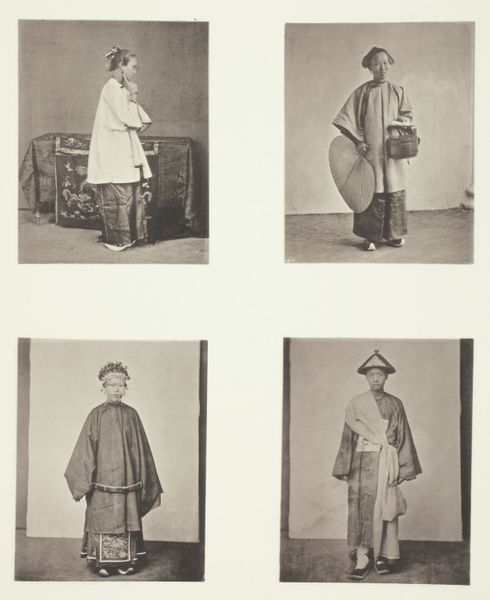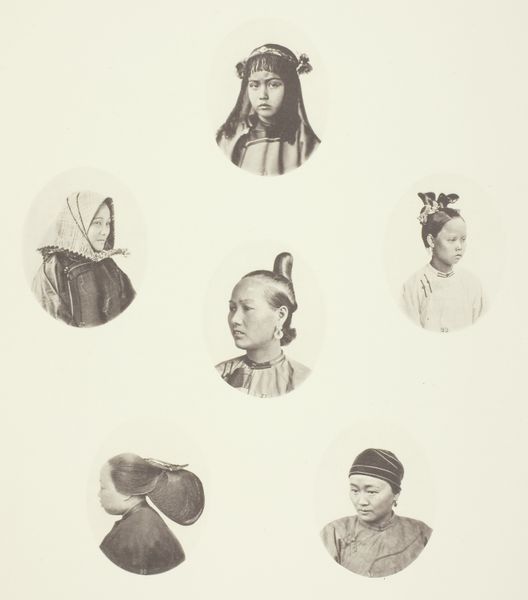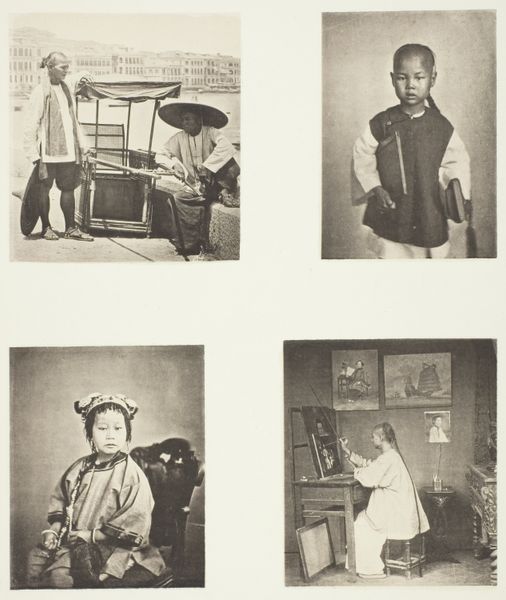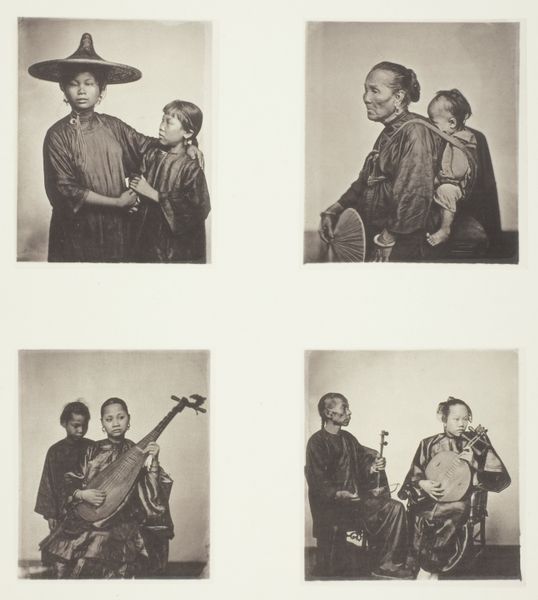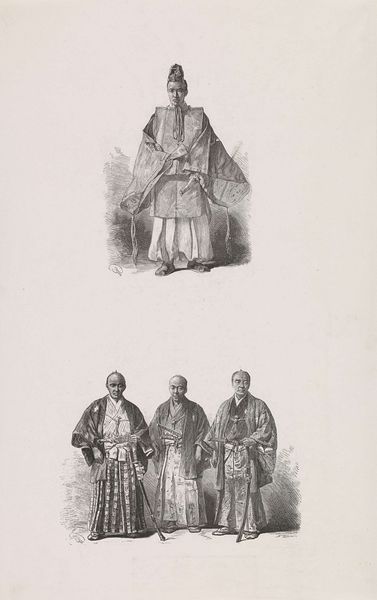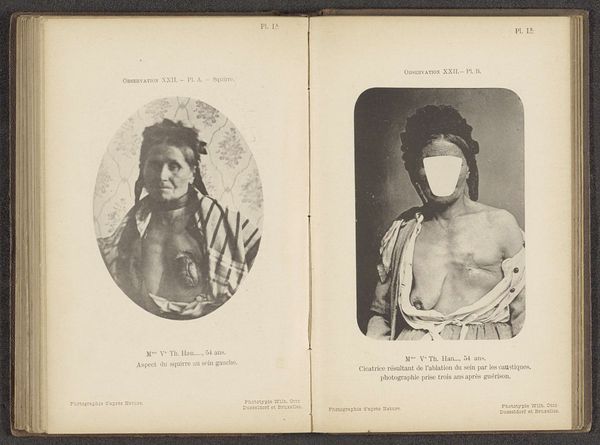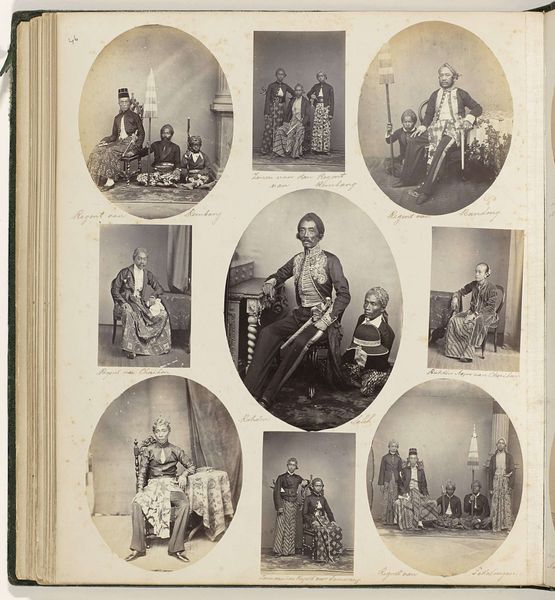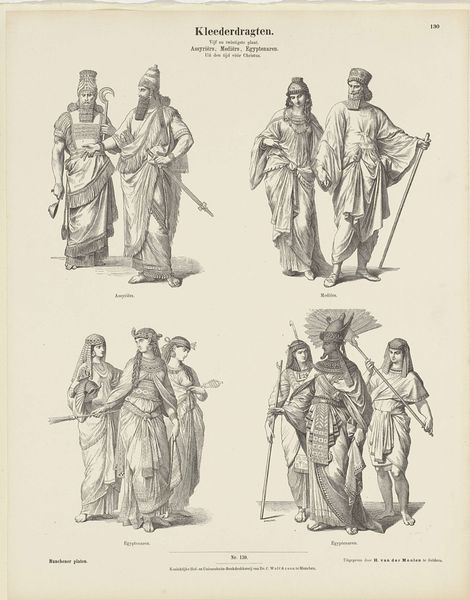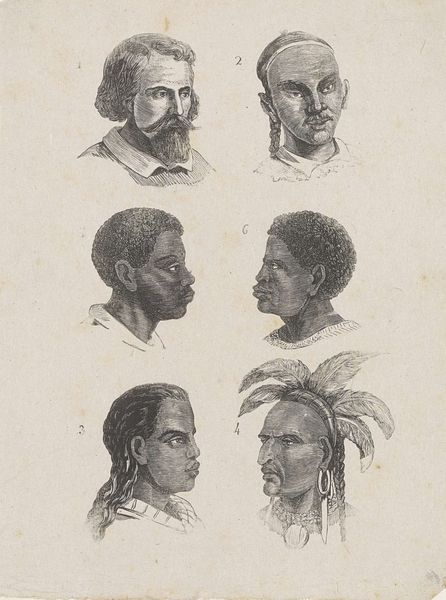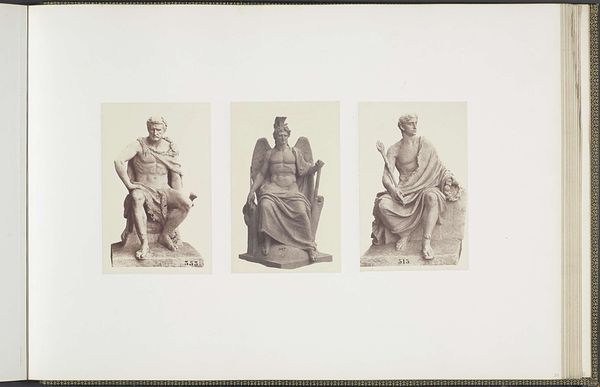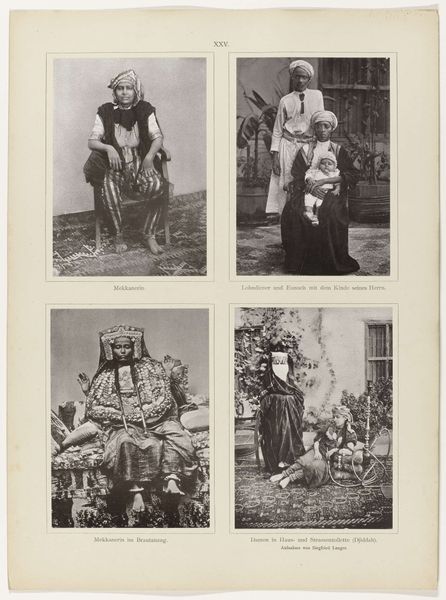
photography
#
portrait
#
african-art
#
16_19th-century
#
caricature
#
photography
#
group-portraits
#
orientalism
Dimensions: 11.3 × 8.8 cm (each image); 47 × 35 cm (album page)
Copyright: Public Domain
Curator: This fascinating photographic print, made around 1868 by John Thomson, is titled "Four Heads, Types of the Labouring Class." It's held here at the Art Institute of Chicago. My initial thought is...it feels a bit like a Victorian-era social experiment captured on a single sheet. What jumps out at you? Editor: An immediate somberness. There’s a weight in their gazes, a silent acknowledgment of their station. Each headshot, boxed in like specimens, whispers a story of lives shaped by toil. The careful arrangement makes them seem almost like a series of playing cards in some melancholic game of life. Curator: Absolutely. The composition certainly enforces a sense of classification. It's like Thomson is trying to document these "types." I see a scholar with a fan, a contemplative elder, a wiry laborer with crossed arms, and a woman veiled in what seems like a heavy cloak. Do these choices echo with a specific historical context? Editor: Profoundly. Remember the Victorian fascination with physiognomy? The idea that inner character could be read on the surface of the face? Thomson’s piece, viewed through that lens, reveals the cultural anxieties and biases of the time. The act of documenting laboring classes in this almost clinical manner reinforced existing hierarchies. It’s also a striking example of Orientalism. These images served a purpose, reinforcing Western perceptions of the East, even while aiming to capture individual realities. Curator: I wonder if Thomson fully grasped the weight of what he was doing? Was it anthropological study, social commentary, or something...else? It's tricky. I mean, the faces themselves hold so much quiet dignity and individuality that it's hard to see this *only* as an objectifying project. Editor: Yes, there’s an undeniable tension. While the overall presentation leans into the scientific objectification common at the time, these people exude such palpable presence, their own identities stubbornly shining through. Notice how their eyes hold ours despite the calculated composition. Symbols persist even when their meanings get contorted. These images become a complex intersection of intention and raw humanity, leaving us grappling with both. Curator: And grappling we are! Looking again, the portraits start to dismantle some of my assumptions. It has transformed from that scientific inventory into a more vulnerable depiction of humankind and how social and political structures intersect with our daily existence. Editor: Exactly. A visual record that prompts reflection, urging us to untangle the past while connecting the threads to present inequalities. A reminder of how the power of visual symbols persists.
Comments
No comments
Be the first to comment and join the conversation on the ultimate creative platform.
